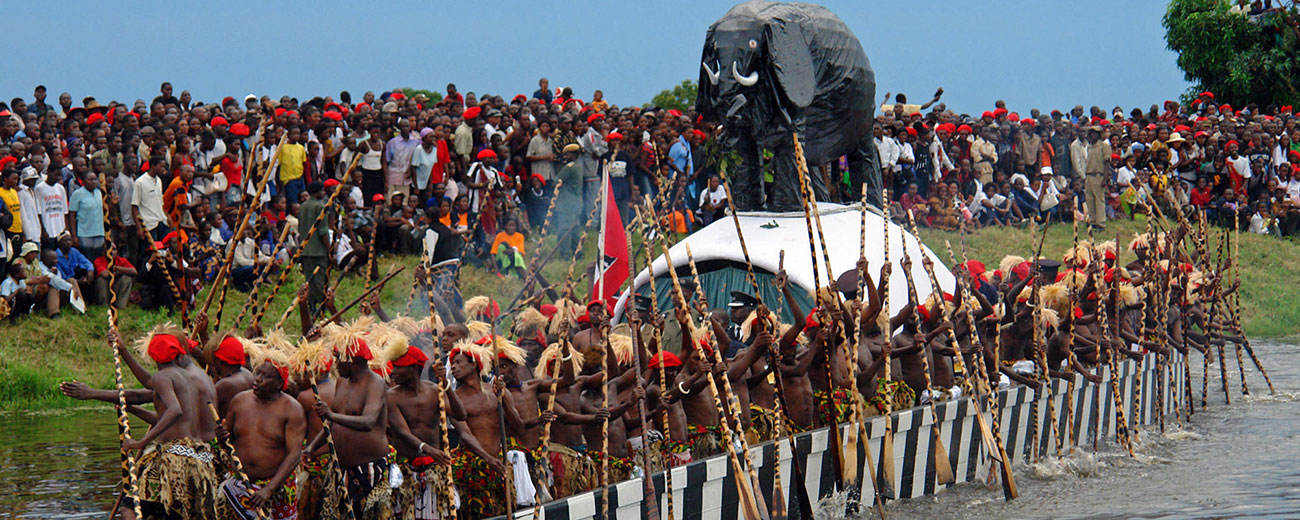The History of Zambia (original) (raw)
- Home
- What to see
- Where to stay
- What to do
- Plan your Trip
- Travel Agents & Operators
* Zambia
* Europe
* United States
- Zambia
- Map
- News
THE HISTORY OF ZAMBIA

The Great Rift Valley, which runs from the Lower Zambezi River in southern Zambia to the headwaters of the Nile in Egypt, is known to be one of the cradles of the human race, and Zambia’s present population lives on lands that have been inhabited by their forebears for aeons.
Archaeologists have established that in the northern African Rift Valley, human civilization got underway at least three million years ago, and crude stone implements have been found beside the Zambezi River.
Early Stone Age sites have been unearthed in many parts of Zambia, the most significant being at the Kalambo Falls in the North and at Victoria Falls in the south. At the former, there is evidence that early humans began using fire about 60 000 years ago. At the latter, a complex has been fully exposed showing the development of skills from the distant past (this dig is enclosed at the Field Museum at the Victoria Falls).
The skull of the famous ‘Broken Hill Man’, dated to 70 000 years ago, gives an indication of what humans of that period looked like.
It was during the next phase – the Middle Stone Age – with its refinement in the manufacture of tools, differentiation between populations, and burial of the dead, that modern humans probably emerged in what is now Zambia, at least 25 000 years ago.
Family groups of small-statured people lived near water and sustained themselves by hunting the abundant game as well as gathering fruits, tubers and honey from their surroundings (some skulls show serious tooth decay caused by honey!). They would often be on the move, following the antelope as they migrated with the seasons. By 15 000 years ago, the Late Stone Age commenced.
People began to live in caves and rock shelters, the walls of which they decorated with paintings. Very few of these have survived Zambia’s seasonally humid climate and those which have do not display the sophistication found in the rock art found in Zimbabwe or South Africa. But a surviving drawing of an eland at Katolola in the Eastern Province suggests that this art was more than decorative, that it had a ritual or religious meaning: this animal was likely sacred to the Late Stone Age people living there.
This spiritual and artistic development occurred alongside another: the invention of the bow and arrow, which revolutionised hunting and also gave humans a mechanical weapon of war, a musical instrument, and a method of starting fire! It has been determined that the people of the Late Stone Age didn’t farm cattle or crops.
This website uses cookies, Some of the cookies we use are essential for the site to work. By continuing to use our site you agree to us using cookies in accordance with our Cookie Policy. OK
Want to receive the latest
Zambia travel news?
Please subscribe to our newsletter: